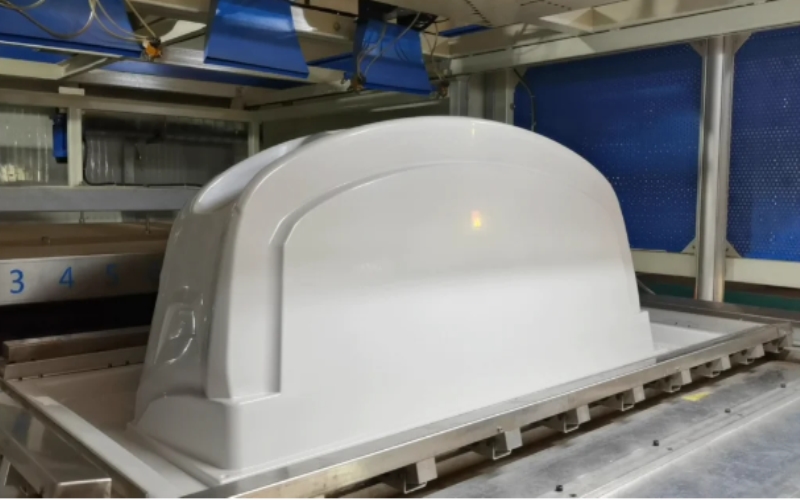Introduction:
In the rapidly evolving landscape of healthcare, where precision, hygiene, and patient safety are paramount, vacuum forming technology emerges as a cornerstone in the production of medical devices. From surgical trays to diagnostic equipment enclosures, vacuum forming plays a pivotal role in shaping the future of medical device design and functionality. In this article, we’ll delve into the intricacies of medical device vacuum forming, its applications, advantages, and contributions to the healthcare sector.
The Process of Medical Device Vacuum Forming:
Medical device vacuum forming is a specialized manufacturing process that involves heating thermoplastic sheets, such as polycarbonate, PETG, or ABS, to a pliable state and then using vacuum pressure to shape the material against a mold. This process allows for the creation of custom-designed medical devices with precise detailing, sterilizability, and compliance with regulatory standards. Key steps in the medical device vacuum forming process include material selection, heating, forming, cooling, and finishing.
Applications in Medical Device Manufacturing:
Medical device vacuum forming finds extensive applications across various healthcare settings and specialties, including:
- Surgical Trays: Vacuum-formed surgical trays provide sterile containment and organization for surgical instruments, implants, and medical supplies during procedures. These trays are designed to meet strict sterilization requirements and facilitate efficient workflow in operating rooms and sterile processing departments.
- Diagnostic Equipment Enclosures: Vacuum-formed enclosures for diagnostic equipment, such as ultrasound machines, patient monitors, and imaging devices, offer protection, portability, and accessibility for healthcare providers and patients. These enclosures are engineered to accommodate electronic components, displays, and interfaces while maintaining ease of use and cleanliness.
- Patient Care Products: Vacuum-formed patient care products, including bedpans, urinals, and fracture braces, provide comfort, hygiene, and mobility for patients in hospitals, clinics, and long-term care facilities. These products are designed to be lightweight, durable, and easy to clean, enhancing patient comfort and compliance with treatment protocols.
- Dental and Orthodontic Devices: Vacuum-formed dental and orthodontic devices, such as mouthguards, retainers, and impression trays, offer precision fit, comfort, and functionality for patients undergoing dental procedures or orthodontic treatment. These devices are customized to individual patient specifications and manufactured to meet strict hygiene and safety standards.
Advantages of Medical Device Vacuum Forming:
Medical device vacuum forming offers several advantages over traditional manufacturing methods, including:
- Sterilizability: Vacuum-formed medical devices are compatible with various sterilization methods, including autoclaving, ethylene oxide (EO) sterilization, and gamma irradiation. The thermoplastic materials used in vacuum forming withstand repeated sterilization cycles without compromising integrity or performance, ensuring patient safety and infection control.
- Customization: Vacuum forming allows for the creation of custom-designed medical devices tailored to the specific needs of healthcare providers and patients. Medical device designers can incorporate features such as compartments, handles, and labeling to optimize functionality, usability, and compliance with regulatory requirements.
- Cost-Effectiveness: Vacuum forming is a cost-effective manufacturing process that requires lower tooling costs and shorter lead times compared to methods such as injection molding or machining. This makes it an attractive option for producing medical devices in low to medium volumes with fast turnaround times and minimal upfront investment.
- Regulatory Compliance: Vacuum-formed medical devices can be manufactured to meet stringent regulatory standards, including ISO 13485, FDA regulations, and CE marking requirements. The traceability, consistency, and documentation provided by vacuum forming ensure compliance with quality management systems and facilitate product certification and market approval.
Conclusion:
Medical device vacuum forming plays a crucial role in advancing healthcare delivery, patient outcomes, and safety. By leveraging the advantages of vacuum forming technology, medical device manufacturers can produce sterile, customized, and cost-effective devices that meet the evolving needs of healthcare providers and patients. As the healthcare industry continues to embrace innovation, digitalization, and personalized medicine, vacuum forming will remain a key enabler of progress and excellence in medical device manufacturing.

